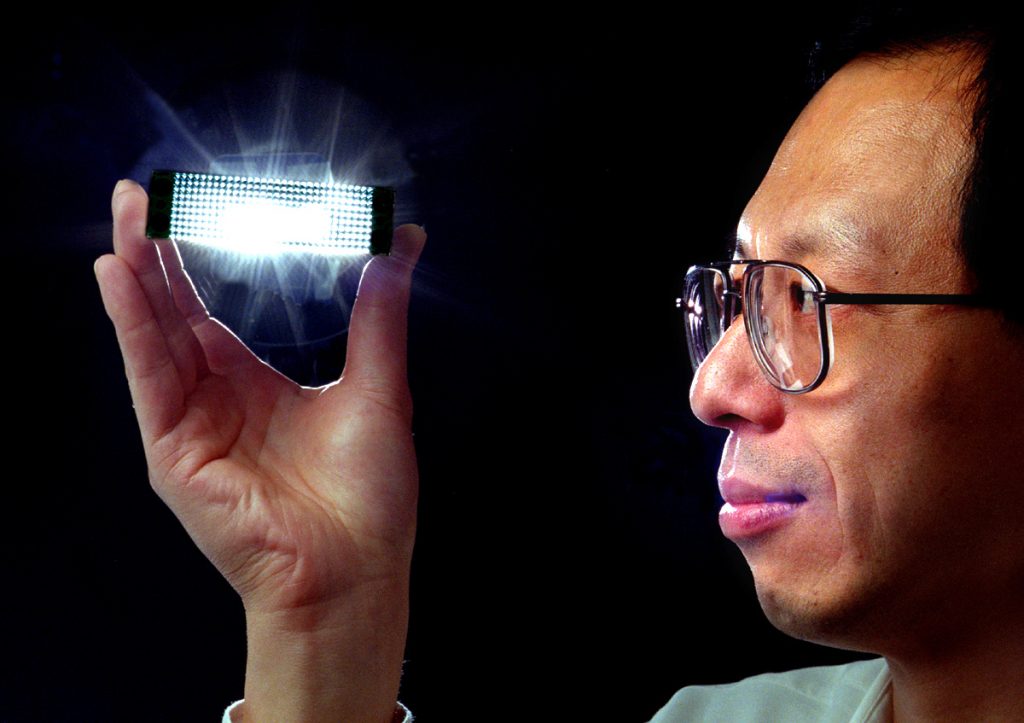
Download 150dpi JPEG image, ‘Shawn.jpg’, 640K (Media are welcome to download/publish this image with related news stories.)
ALBUQUERQUE, N.M. — The prestigious journal Science, listing the top ten categories of major discovery in 1999, includes a paper by three researchers at the Department of Energy’s Sandia National Laboratories as a major contribution to advancing the field of photonics — the containment and bending of light.
Bending light efficiently can lead to more effective communications in the microwave, infrared, and optical zones of the electromagnetic spectrum. These regions are of interest, respectively, in airplane communications, military intelligence, and almost all modern telephone communications. A futuristic interpretation may some day involve the creation of computers based on light instead of electrons.
According to Science in its last issue of 1999, “Semiconductors transformed the communications and computing industries by channeling electrons faster than giant old vacuum tubes could. And many observers expect that in the 21st century these industries will be transformed again by photonic crystals, lattice-like structures that have the potential to manipulate photons as semiconductors do electrons — but at the speed of light.”
The Sandia-led research paper describes how to bend light far more efficiently than achieved before, through the mechanism of a photonic crystal made first of alumina rods and subsequently of silicon. At Sandia, a crystal was created by assembling a structure made of “logs” of silicon too small to see. The resultant “Lincoln Log-like” structure, which under a microscope resembles a child’s building made of Popsicle sticks, puts silicon atoms at regular distances from each other and resembles the atomic structure of natural materials — except that silicon atoms do not naturally exist at these distances from each other.
The designed structure consists of little tunnels created to hold and channel light of particular frequencies with almost 100 percent effectiveness, even around hair-pin turns.
The paper, titled “Experimental Demonstration of Guiding and Bending of Electromagnetic Waves in a Photonic Crystal,” Science 282:274 (Oct. 9, 1998), was written by Sandia researchers Shawn-Yu Lin, Edmond Chow, and Vince Hietala, co-authored with Pierre R. Villeneuve and J. D. Joannopoulos of the Massachusetts Institute of Technology). The paper was one of several published by Lin on the subject, and is one of six thought crucial by Science to the field’s development in 1999.